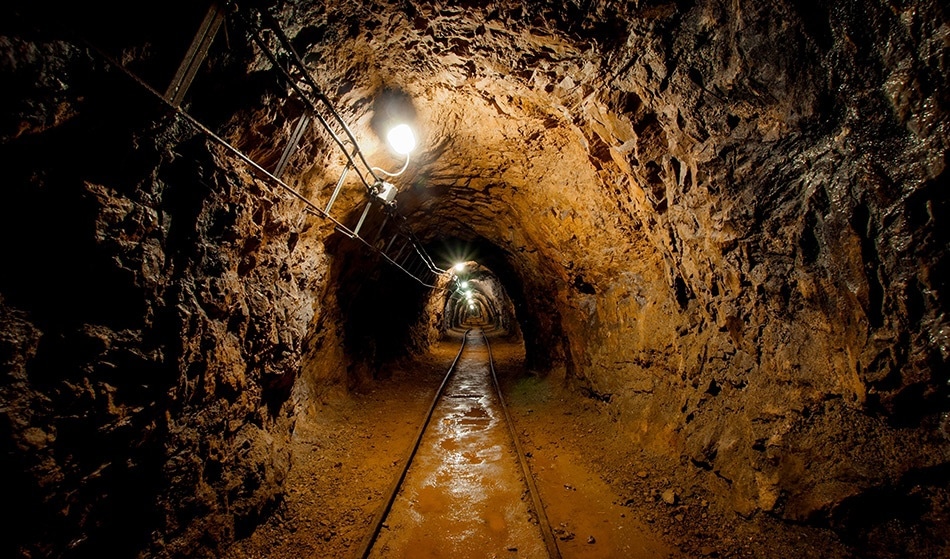Every year in the United States alone, the mining industry (excluding oil and gas) is estimated to consume approximately 1,246 trillion Btu (TBtu)/year of energy. Of these industries, the metal industry is responsible for the highest energy consumption of 552.1 TBtu/year, whereas the coal and mineral industries are responsible for 552.1 and 485.3 TBtu/year, respectively1.
These mining industries play an important role in acquiring the materials that are necessary to generate thousands of different parts and products that are used every day around the world. As the global demand for materials continues to rise, mining operations have been forced to go deeper into the earth to acquire metals and other resources that have now been depleted from surface ore deposits2. These mining processes require tremendous amounts of energy, thereby increasing the cost and emissions produced during these operations.

SvedOliver/Shutterstock
Applications of the Internet of Things (IoT) in Mining
The Internet of Things (IoT) is a term used to describe the billions of physical devices around the world that are connected to and controlled by the internet3. More specifically, the “things” refers to any endpoint within the various networks of IoT, which can include different equipment, machinery, sensors, and even Artificial Intelligence (AI) systems.
Each network within the IoT is connected by a unique internet protocol (IP)2 that allows data and information to be shared without requiring any human interaction in the process. The integration of IoT into the mining industries can be found in a wide variety of different processes, some of which include deposit exploration, equipment maintenance, mineral exportation and much more.
Improving Process Optimization
In 2008, the European Commission launched the European Union (EU) Raw Materials Initiative, which was one of the first developed strategies aimed towards improving the sustainability of raw material acquisition within the EU. From this initiative, IoT research promoted the generation of sensing and control systems that will enhance the autonomy of various mining systems.
For example, various mining machinery was developed with an automated boundary layer and material detection system, collision-avoidance capabilities, and automatic navigation and guidance systems that allowed for positioning and cutting processes to be easily achieved. As a result, the EU found that their combined systems improved overall plant efficiency and reduced deep deposit mining costs by 17% and 20%, respectively4.
Intelligent Mining Technology
In addition to the EU, various countries around the world, of which include China, Australia, and the U.S., have devoted a considerable amount of resources towards the development of intelligent mining technology. The foundation of these machines involves a monitoring center in which a miner can control and operate all equipment involved in current mining processes by selected certain keys on a panel. Furthermore, this panel also provides the miner with the ability to communicate with other equipment to perform a wide range of tasks.
Some of the main intelligent mining procedures that are currently being used around the world include:
Automatic Shearer Operation
An automatic shearer’s functionality is dependent upon memory-cutting software that directs the shearer to cut coal walls. Through a position sensor located on the hauling part of the shearer, the miner can control the precise position of the shearer from the monitoring sensor.
Conveyor Control
Various conveyors are involved in common mining processes, which can include a scrape, bridge or belt conveyor. One of the most important aspects of the conveyor is its position, as it must be laid down straight along the work face4.
Since this position can be difficult to visualize due to the unstable floor and dust often present around the work site, a laser array measurement can be used to support and maintain the position of the conveyor. As a result, the miner can ensure that all running conditions remain optimal.
References
- “Mining Industry Energy Bandwidth Study” – U.S. Department of Energy Industrial Technologies Program
- “Reducing Energy Consumption in the Mining Industry with the IoT” – Digitalist Magazine
- “What is the IoT? Everything you need to know about the Internet of Things right now” – ZDNet
- Wang, J., & Huang, Z. (2017). The Recent Technological Development of Intelligent Mining in China. Engineering 3(4); 439-444. DOI: 10.1016/J.ENG.2017.04.003.
Disclaimer: The views expressed here are those of the author expressed in their private capacity and do not necessarily represent the views of AZoM.com Limited T/A AZoNetwork the owner and operator of this website. This disclaimer forms part of the Terms and conditions of use of this website.